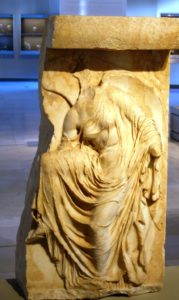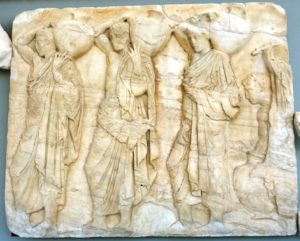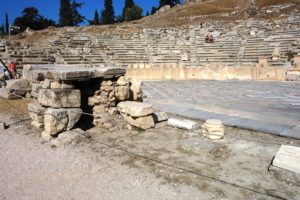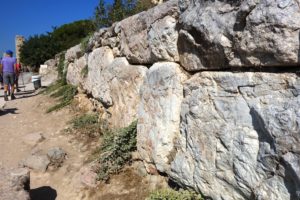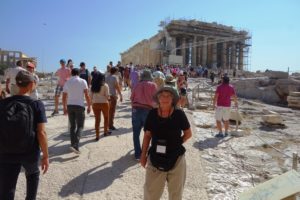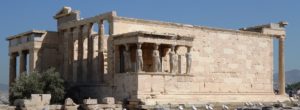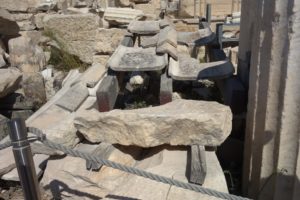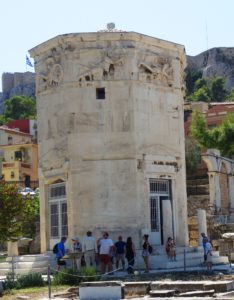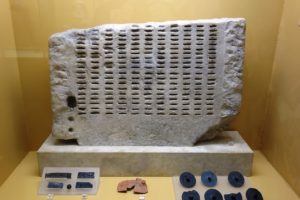Our tour of Athens was very satisfying. Unfortunately, I’m having troubles turning our tour into an interesting story. We started our tour with the stunningly beautiful Acropolis Museum. There were plenty of Greek statues, pediments, etc. The most famous is this statue of Winged Victory. It is a masterpiece of movement.
This is the other stone carving that caught my eye. These young men are carrying wine. Notice the young man on the right set his jug down to take a rest.
Our next stop was the Acropolis itself. This is the oldest theater in the world, since the Athenians invented theater and this was the first they built. During the spring celebration, commoners were paid to attend the theater, this being considered a type of adult education. Up to three actors were on the raised platform on the left. The chorus was in the flat semi-circle area. The stadium seated about 5,000.
The Acropolis was the center of the area long before Athens was formed. This is the remains of a Mycenaean wall, probably from around 1100 BC.
This is the temple of Victory, located on the edge of the Acropolis.
The Parthenon was the showpiece of the Acropolis. It was also where the Athenians stored their wealth. The statue in the Parthenon was a 30-foot-tall ivory and gold statue of Athena.
The religious center of Athens was a much smaller temple called the Erechtheion. This had a man-sized statue of Athena, protector of Athens on the upper level and a statue of Poseidon on the lower level. Note the three Caryatids supporting the portico.
This is a mock-up of the Parthenon’s roof. It used cypress wood and marble tiles. It was quite heavy.
This building is called Tower of the Wind. Its 8 sides were supposed to represent the 8 directions of the wind. The holes in the sides near the top contained beams projecting out. They were used as sun dials to tell the time.
The Acropolis was the show-point and religious center of town. The money spent to build it came from tribute paid to Athens after they defeated the Persians. Other city-states felt the money should have been used on defensive projects such as a stronger navy. Resentment from this mis-spending was the root cause of the Peloponnesian wars. However, the true heart of Athens was the Agora, just down the hill from the Acropolis. This is where the markets were. It is where people voted, held their congress, etc. The Agora is mostly a total ruin, but it contains the Temple of Hephaistos, which is the best-preserved temple in Athens. It is a typical temple. Its preservation is thanks to having been converted to the Church of St. George.
This machine was used for jury selection. Jurors were selected randomly the morning of a trial, to minimize the possibility that the accused would be able to bribe the jury.

